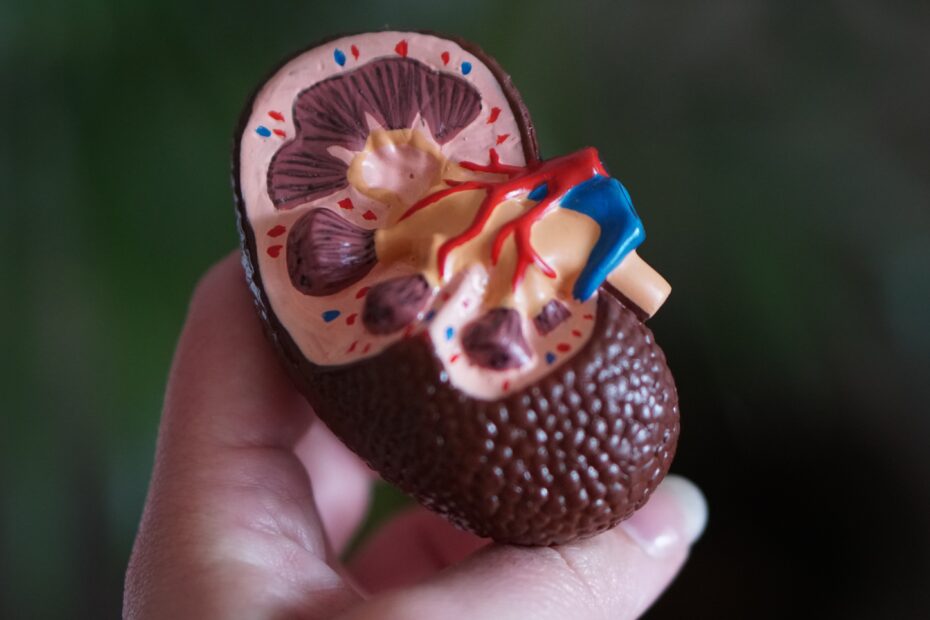Twists, Bends, and Breathing Techniques to Improve Energy Flow
The kidneys are connected to the second chakra, which is located at the hypogastric plexus and rules our water element, one of the feminine or yin energies of the body.
Physiologically, hatha yoga attends to the hips, lumbar, and sacral regions to stimulate this energy. Specific asanas can also aid in maintaining and stimulating the healthy flow of fluids in the body, which improves kidney function and revitalizes energy in the second chakra. Such fluids include the synovial fluids of the joints and the fluids of the lymphatic system as well as a healthy level of blood and urine production.
Asanas that simply put pressure on the kidneys also help to flush and cleanse these organs. Pranayama, particluarly rapid abdominal breathing, can also tone and cleanse the kidneys and related organs.
The meridian line, or energy line, that stimulates the kidneys runs from the bottom of the fifth toe and through the inner knee, thigh, and sacral region. Twists, back bends, forward folds, and inner thigh stretches will stimulate the second chakra and release blockages.
The following suggested exercises for improving kidney fucntion are organized by anatomical movement. Many asanas and pranayma practices that benefit the kidneys are not listed here, but it is important to remember that the type of movements exemplified by the exercises below are beneficial in this area and that any exercise that accomplishes a similar movement will have similar effects.
Twists
- Ardha Matsyendrasana (Half Lord of the Fishes Pose)
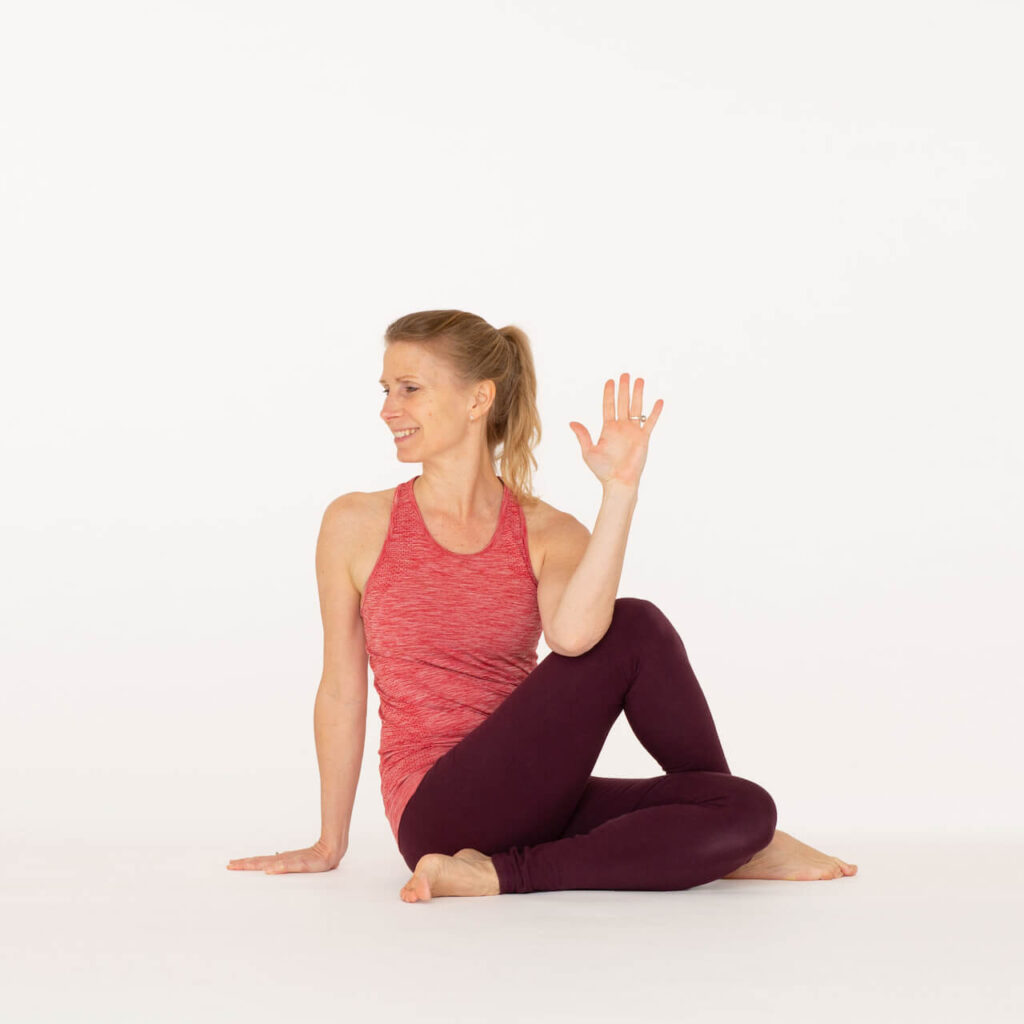
From a seated position with both legs out in front of you, place the left foot on the floor on the outside of the right knee, left knee pointing skywards. Bend the right knee and bring the right foot to the outside of the left hip. Inhaling to straighten and lengthen the spine, exhale as you twist to the left and bring the right elbow to the outside of the left knee. The arm may be bent or straight. Remain in this simple twist for several breaths, lengthening the spine with the inhale and deepening the twist with the exhale. Twists are generally detoxifying for the internal organs. This twist is particularly beneficial to the back body where the kidneys are located.
Back Bends
- Kapotasana (Pigeon Pose)
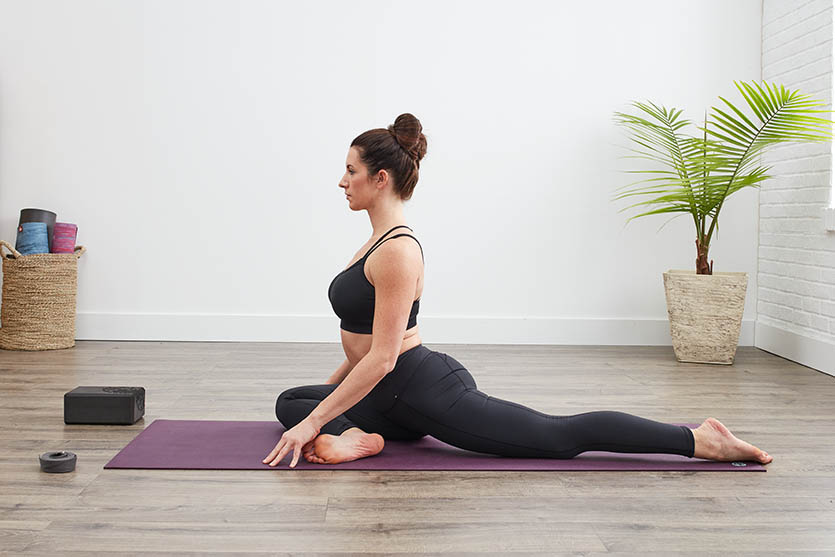
From downward facing dog, assume an easy pigeon pose, letting the right knee come behind the right hand, the right foot by the left hip. The left leg extends behind you. Inhale and lengthen the spine, lifting the heart skywards. Press through the hands, roll the shoulder blades together and down the back as you attempt to square the hips to the front of your mat and root the pelvic floor towards the earth. The hips may float above the mat and you may find that coming up onto the fingertips is more comfortable. What is important to focus on is the bend in the lower back, increasing blood and energy flow in this area by engaging the muscles.
Forward Folds and Seated Positions
- Sleeping Swan
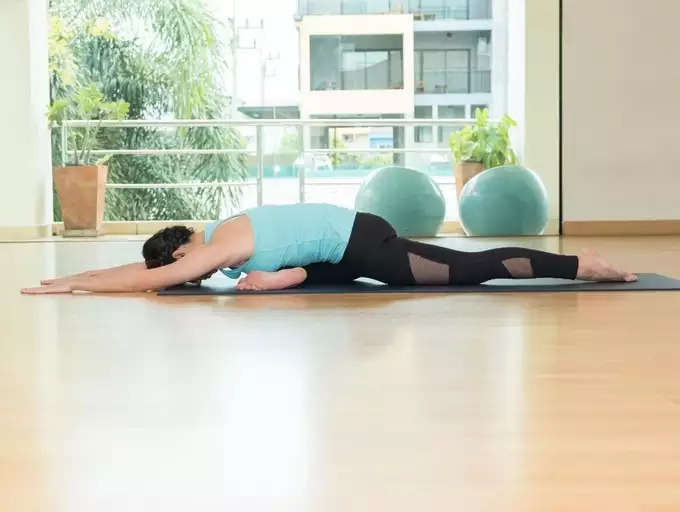
Assume pigeon pose as above, lengthening the spine and lifting the heart with the inhalation. As you exhale, walk the hands forward and let the torso round over the right leg. Release completely into the pose, letting the hips fall where they may. Focus on breathing into the back body. This pose is a Yin Yoga pose and should be done in a relaxed manner without force or muscular energy. Repeat on the other side.
- Baddha Konasana
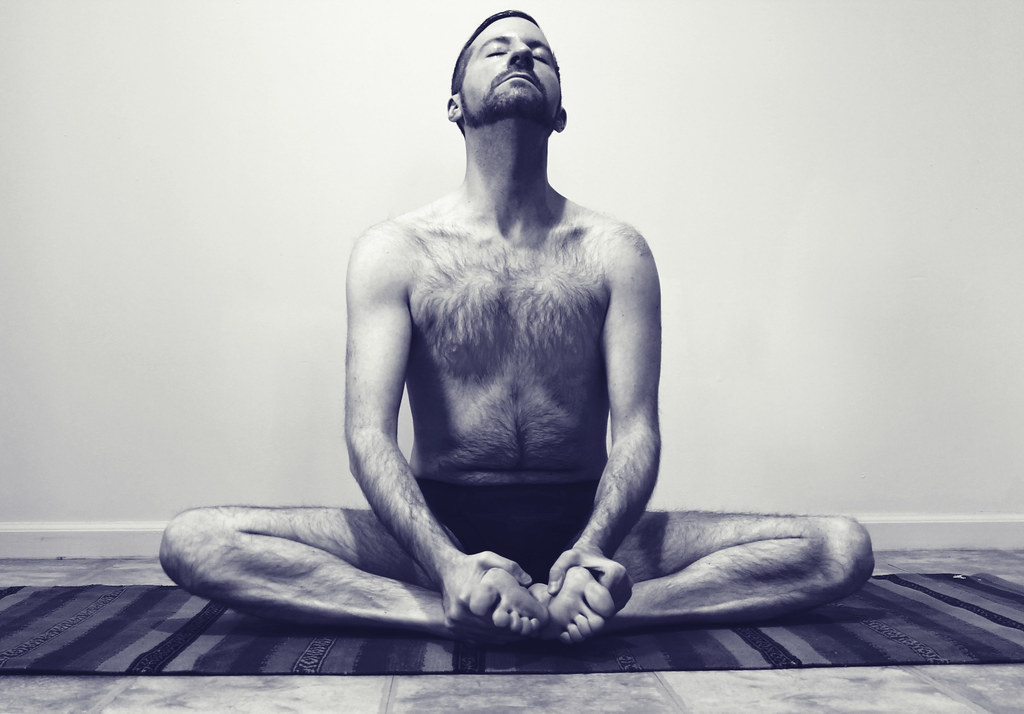
This is a simple seated posture that stretches the inner thighs and stimulates the kidney meridian. It also opens the sacral area when folding forward. Bring the soles of the feet together, holding the tops of the feet with the hands. Bring the feet as close to the pelvis as possible. Using the leverage of the hands binding with the feet, lift the chest forward and lengthen the spine. You may fold forward with a flat back, using the elbows to open the inner thighs or take a more yin approach and allow the back to round, opening the back body and releasing the sacrum.
Inner Thigh Stretches
- Upavistha Kona Asana
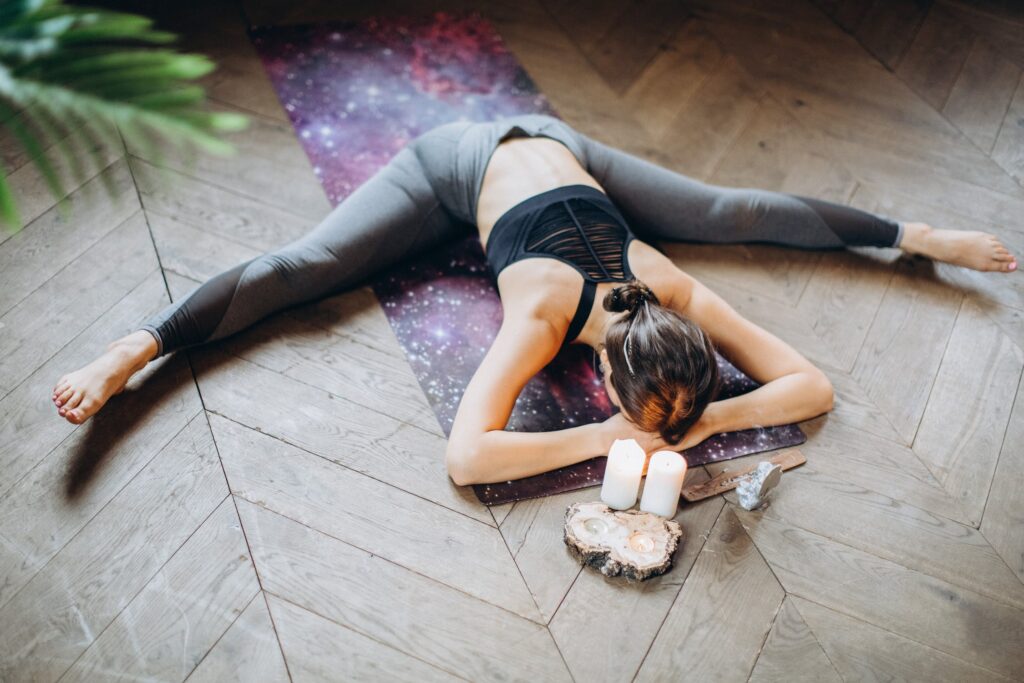
This is simply a wide-legged seated forward bend. This is often an intense posture for many students, but this is a key area of the body where the emotion of fear is held, which often blocks the second chakra energy. Encouraging fluidity in the hips and pelvis can create a graceful and flowing energy in the body that translates to everything from better organ function to more relaxed mannerisms.
Kriyas (Movements)
- Hip Circles
Simply standing with feet hip width apart, place the hands on the hips and begin to make the largest, most fluid circle you can with the hips. You may also try to make a figure eight with the hips. This simple movement awakens the second chakra and encourages fluidity and gracefulness in the hips. It is also a gentle massage for the lower abdomen.
Breathing Techniques
- Kapalabhati
This rapid abdominal breathing is an advanced pranayama technique. Only those who are trained in the full yogic breath should attempt more advanced techniques. Essentially, kapalabhati is a rapid pumping of the diaphragm (lower abdominal breathing). It is a general energy cleanser that is toning and rejuvenating for such internal organs as the kidneys. It is generally practiced in sets of 60 to 120 breaths, but students new to pranayama are encouraged to start slowly and build up to the full number of breaths. Rest in childs pose or savasana after this exercise.
